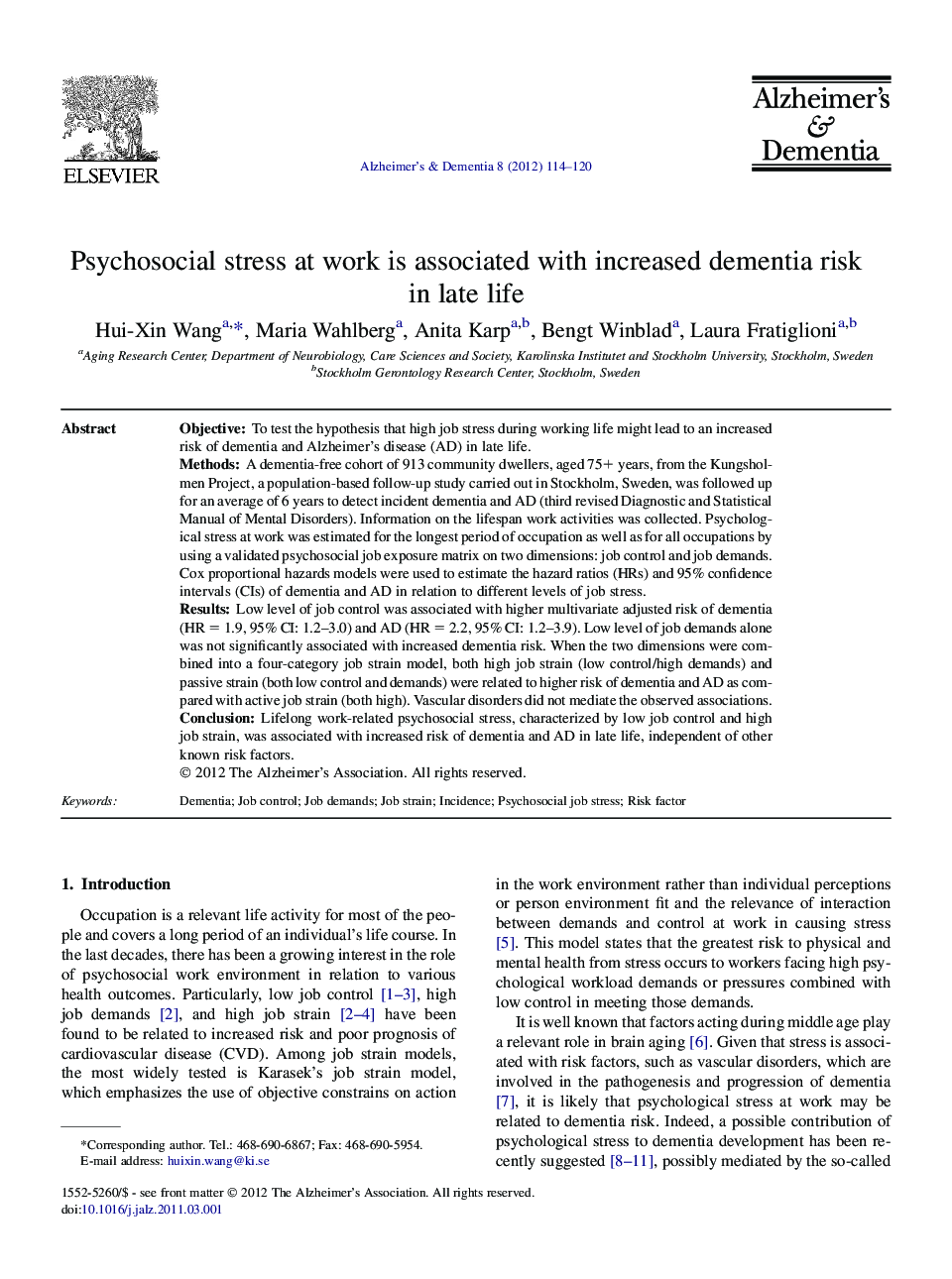| Article ID | Journal | Published Year | Pages | File Type |
|---|---|---|---|---|
| 5624633 | Alzheimer's & Dementia | 2012 | 7 Pages |
ObjectiveTo test the hypothesis that high job stress during working life might lead to an increased risk of dementia and Alzheimer's disease (AD) in late life.MethodsA dementia-free cohort of 913 community dwellers, aged 75+ years, from the Kungsholmen Project, a population-based follow-up study carried out in Stockholm, Sweden, was followed up for an average of 6 years to detect incident dementia and AD (third revised Diagnostic and Statistical Manual of Mental Disorders). Information on the lifespan work activities was collected. Psychological stress at work was estimated for the longest period of occupation as well as for all occupations by using a validated psychosocial job exposure matrix on two dimensions: job control and job demands. Cox proportional hazards models were used to estimate the hazard ratios (HRs) and 95% confidence intervals (CIs) of dementia and AD in relation to different levels of job stress.ResultsLow level of job control was associated with higher multivariate adjusted risk of dementia (HR = 1.9, 95% CI: 1.2-3.0) and AD (HR = 2.2, 95% CI: 1.2-3.9). Low level of job demands alone was not significantly associated with increased dementia risk. When the two dimensions were combined into a four-category job strain model, both high job strain (low control/high demands) and passive strain (both low control and demands) were related to higher risk of dementia and AD as compared with active job strain (both high). Vascular disorders did not mediate the observed associations.ConclusionLifelong work-related psychosocial stress, characterized by low job control and high job strain, was associated with increased risk of dementia and AD in late life, independent of other known risk factors.
